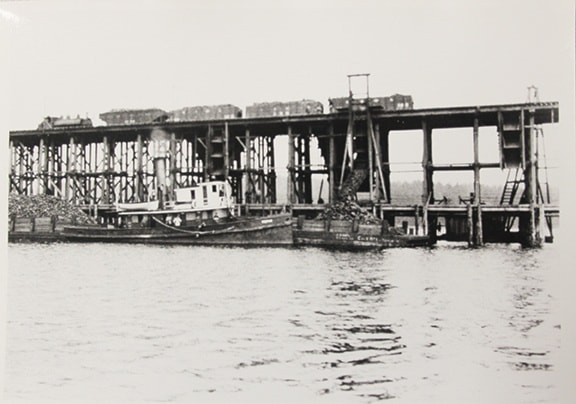"The boat then went straight down, the top of the mast being only a foot or so out of the water when we saw it last."-Robert Gibson.
Walter E. Blackett.
Who recognizes his name today? Yet he was widely known and highly regarded by his contemporaries, if his funeral in June 1888 is any measure.
Word of his death by drowning in Baynes Sound was delivered by the steamer Cariboo-Fly and "spread like wildfire". Coal baron Robert Dunsmuir dispatched the S.S. Pilot to take the railway contractor's remains to Nanaimo. When the Pilot warped alongside Johnson's wharf, she was met by several hundred people who followed the hearse to the Albert Street residence of the deceased's in-laws, the Van Houtens.
The funeral, conducted two days later with the rites of Ashlar Lodge No. 3, A.F. A.M., was equally well attended.
In short, Walter E. Blackett was "universally respected and honoured by all who had the pleasure of his acquaintance, either as friend or employer". His tragic death, at age 34, occurred while he was overseeing construction of the bridges and trestles for the Dunsmuirs' Union Colliery railway line.
Robert Gibson, his assistant and timekeeper, told a harrowing account of the accident that claimed Blackett's life. It all began early Friday morning, June 15, with Blackett's telling him that they had to meet the steamer Dunsmuir off today's Royston to take delivery of materials and supplies.
It was raining so heavily that they left the other men in camp, proceeded to the beach, launched a dory and rowed out to an anchored sailboat with which they met the Dunsmuir. After transferring four tons of hardware and supplies, they headed back to shore and the steamer headed south. Their sailboat, it seems, was overloaded for the stormy conditions, as Blackett remarked that he didn't think it "would hold till we got to the shore". But they had no choice but to continue until within a mile and a-half of their landing place.
By this time, their dory, trailing astern, had been swamped and overturned, and it was obvious that if they attempted to land in the raging surf they, too, would be upset.
Blackett changed course for Comox but the weakened rudder failed so he attempted to steer with an oar. Off Hart's Point, however, they were swamped. "As she was sinking," Gibson "grabbed a box of crackers to keep me up, but Blackett told me to grab an oar and jump. I did so, and [he] did the same. The boat then went straight down, the top of the mast being only a foot or so out of the water when we saw it last."
They struck out for shore, more than a mile distant, with Blackett "all the time encouraging me and directing me how to keep the oar to the waves". They proceeded in this manner "for a long time," Blackett in advance until, riding a huge wave, they could see men running along the beach.
About this time Blackett kicked off his gumboots and Gibson called out to ask him how he was doing. In response the contractor asked Gibson if he thought he could make it and, assured that he could, replied, "God help you - I can't - I'm done."
Minutes later, Gibson touched bottom, staggered ashore and collapsed. Revived by workers who'd witnessed their capsizing but had no boat with which to go to their rescue, he was told that it had taken them "a quantity of stimulants and two hours steady work" to revive him.
There was no helping Blackett, to whom Gibson said he owed his life for having encouraged and directed him how to keep afloat for three torturous hours. Word of the tragedy had brought Blackett's workers from camp - some in their stockinged feet as they hadn't taken time to put on their boots. Blackett was dead when they found him.
www.twpaterson.com
